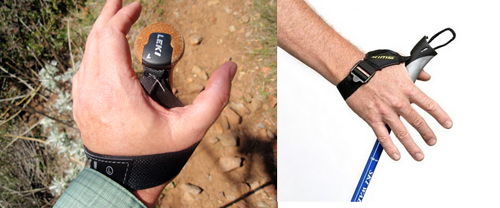
- Wear your ski gloves when looking at your ski pole choices. This will help you gauge the feel of the pole given the gloves you’ll be wearing when you hit the slopes.
- Ask what material the ski pole is made from. The majority of poles are are made of graphite, fiberglass, aluminum, or composite. Graphite poles are more lightweight and strong. Aluminum poles tend to be more affordable but they are more prone to flexing or snapping.
- Expect to pay $35 to $80 for a good pair of ski poles. Don’t go for the cheapest version. You want your ski poles to be durable.
- Find the grip that suits you. Ski poles have various grips. Most have nylon straps which can go around your wrists. Others have a plastic loop around the grip.
Getting the Right Pole Height for You
Ski pole length or height is crucial to picking the right ski pole. If your ski poles are too short, you will lean forward too much. If your ski poles are too long, you will be too upright. Pole height largely influences your skiing stance, so make sure you choose the right height for you!
- Stand up straight and put your arms on your sides.
- Turn the pole upside down. Hold the pointed end above* the basket.
- If the poles are the right height for you, the ski pole grip will be touching the ground, and your elbows will be at a 90 degree angle with your forearms parallel to the ground.
*We used to have people hold the pointed end below the basket, but because in contemporary skiing we rarely plant the pole in the snow up to the basket, but rather tend to glide the tip over the snow, we feel that holding the pole above the basket results in a better fit.
How to Grip a Ski Pole
Article and photos republished with permission from www.epicski.com.
Photo: Tore Urnes
 Your Privacy Choices
Your Privacy Choices

 The
The